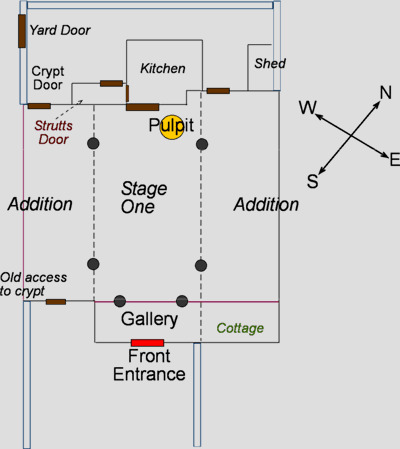This page is a slideshow of the construction and history of Strutt's Unitarian Chapel in Field Row, Belper. (You may need to "allow blocked content" by clicking the top bar in Internet Explorer to see the slideshow. It is safe to do so.)
The Chapel was built about 1786-8 to rehouse the already-established Presbytarian/Unitarian community of Belper, and replaced their old meeting house at the end of what is now called Green Lane.






































